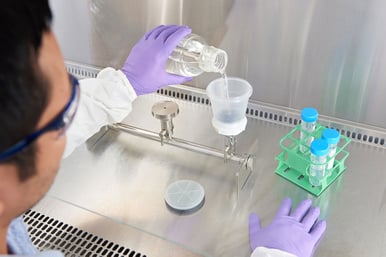blog
June 10, 2022 | Source: Rapid Micro Biosystems, Inc.
Ask Rapid: Validating Water Testing
POSTED BY Rapid Micro Biosystems | 5 minute read
June 10, 2022 | Source: Rapid Micro Biosystems, Inc.
POSTED BY Rapid Micro Biosystems | 5 minute read
Answering your questions about water testing and automation with the Growth Direct® System.

Pharmaceutical water testing is responsible for a large share of the workload in quality control (QC) microbiology labs, particularly those that still use traditional manual processes for sample enumeration, tracking, and reporting. Automating these processes with the Growth Direct® System can greatly boost staff productivity, freeing highly trained analysts from time-consuming tasks that are also highly subjective and prone to human error. So, in this edition of “Ask Rapid” we’ll address a few common water testing questions.
Is automated water testing comparable in accuracy and speed?
Our studies show that the rapid detection technology and associated algorithms used by the Growth Direct® System have enumerated microorganism colonies with a level of accuracy comparable to the standard method, with all surveyed microorganisms passing recovery testing. And when it comes to speed, there’s really no comparison. Tests demonstrated that a faster result could be obtained by 96 hours with the Growth Direct® System, compared to seven days with the traditional control method.
How do I validate water testing with the Growth Direct® System?
Because the Growth Direct® System performs as an automated incubation and colony counting system, qualification of the incubators and the colony counting technology are key procedures. Validation can be divided into five steps.
Sections 3, 4, and 5 can even be merged into the same experimental design if required.
What kind of validation support can you offer?
Rapid Micro Biosystems has an extremely experienced support team, offering a range of services proven and refined while serving a majority of the world’s top 20 biopharma companies. We can provide:
Where can I learn more?
For extensive data on use of the Growth Direct® System in water testing, try this article:
Have more questions? Contact Rapid Micro Biosystems today. We’ll be happy to discuss ways to modernize your water testing program.